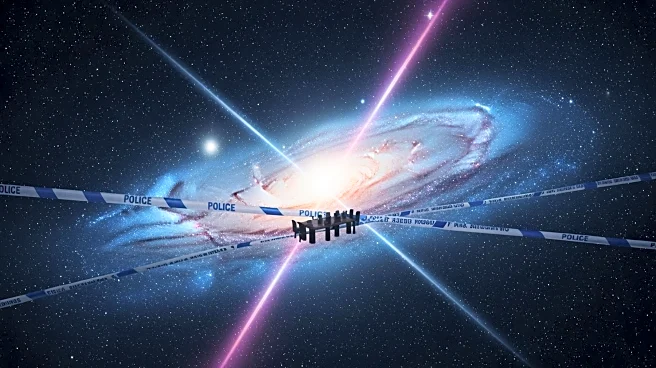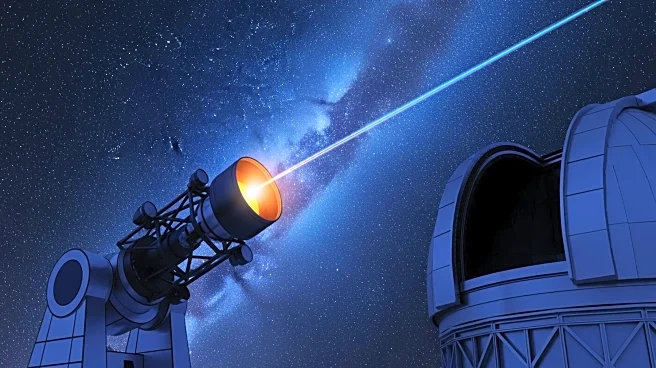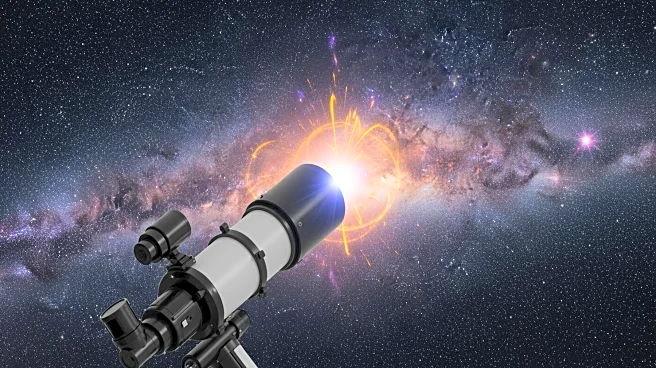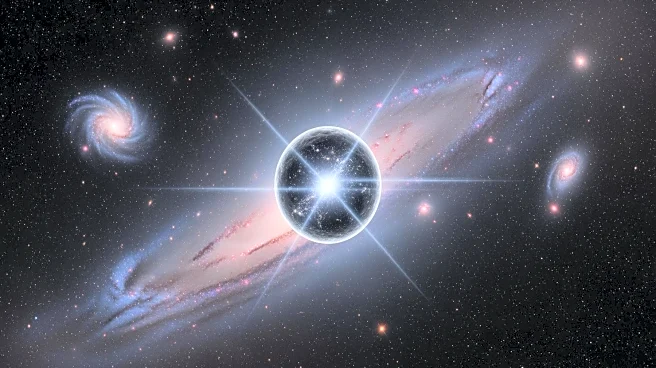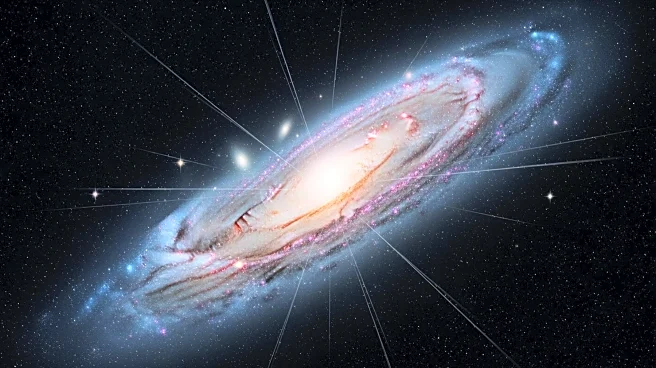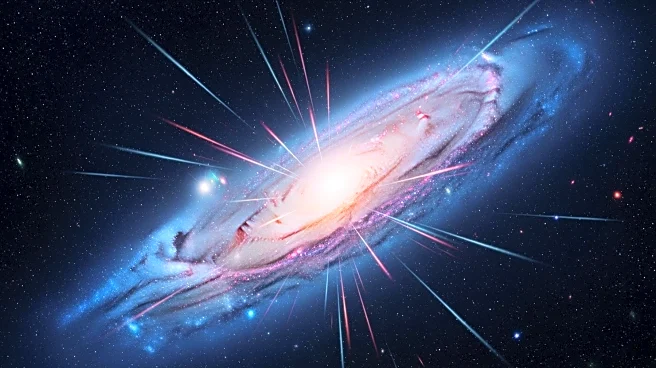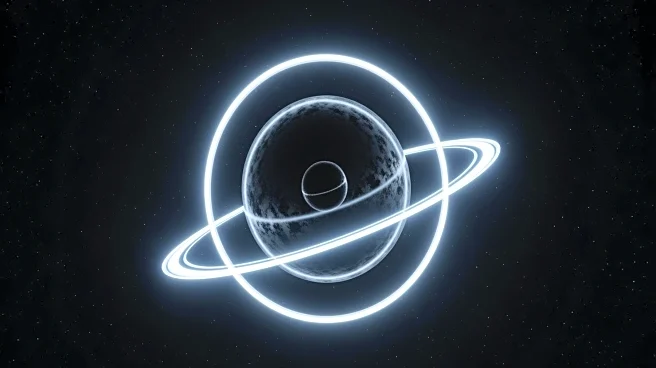What's Happening?
Scientists at Johns Hopkins University have been investigating a faint, widespread glow of gamma rays near the Milky Way's center, which could potentially be linked to dark matter. The source of this mysterious
light has remained uncertain, with two main possibilities: it could stem from the collision of dark matter particles or from rapidly spinning neutron stars known as millisecond pulsars. The study, published in Physical Review Letters, suggests that both explanations are currently plausible, and if the gamma radiation is not from aging stars, it could represent the first concrete evidence of dark matter.
Why It's Important?
The potential identification of dark matter through gamma rays is significant as it could provide the first concrete evidence of this elusive substance, which is believed to make up a large portion of the universe's mass. Understanding dark matter is crucial for comprehending the structure and evolution of galaxies. The findings could lead to breakthroughs in astrophysics and cosmology, offering insights into the fundamental forces and particles that govern the universe. The research also highlights the importance of advanced supercomputer models and high-resolution observations in exploring cosmic mysteries.
What's Next?
The research team plans to conduct further experiments to test whether the gamma rays from the Milky Way have higher energies, indicating millisecond pulsars, or are the lower energy product of dark matter collisions. The construction of the Cherenkov Telescope Array, a new gamma ray telescope, is expected to provide higher-resolution data that could help resolve the mystery. The team will also work on predictions about dark matter locations in dwarf galaxies surrounding the Milky Way, comparing them to high-resolution data to confirm one theory over the other.
